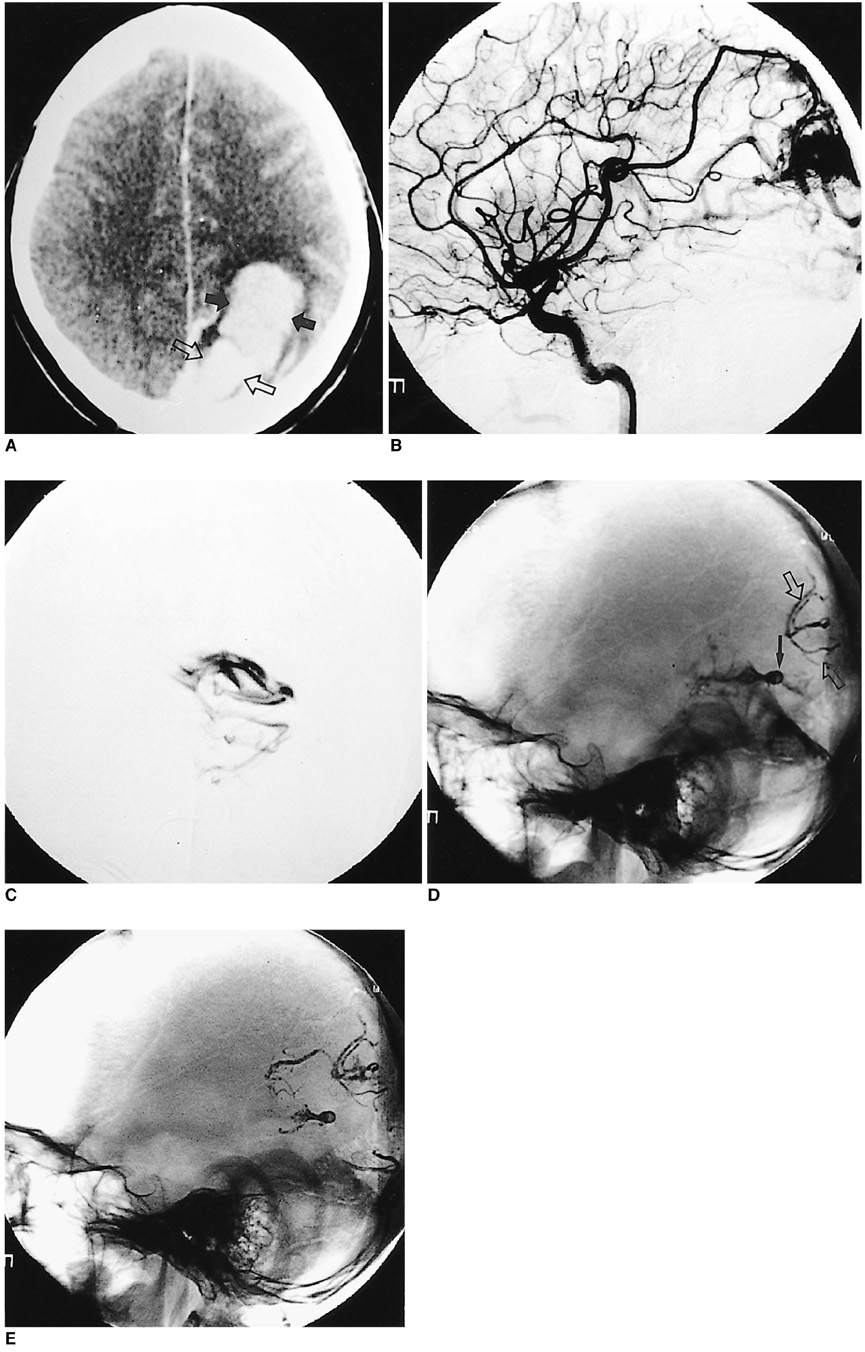Korean J Radiol.
2000 Dec;1(4):208-211. 10.3348/kjr.2000.1.4.208.
Successful Management with Glue Injection of Arterial Rupture Seen during Embolization of an Arteriovenous Malformation Using a Flow-Directed Catheter: A Case Report
- Affiliations
-
- 1Department of Diagnostic Radiology, Wallace Memorial Baptist Hospital, Pusan, Korea. cinemani@nownuri.net
- KMID: 1378946
- DOI: http://doi.org/10.3348/kjr.2000.1.4.208
Abstract
- We present a case in which an arterial rupture occurring during embolization of an arteriovenous malformation of the left occipital lobe with a flow-directed micro-catheter,was successfully sealed with a small amount of glue. We navigated a 1.8-Fr Magic catheter through the posterior cerebral artery, and during superse-lective test injection, extravasation was observed at the parieto-occipital branch. The catheter was not removed and the perforation site was successfully sealed with a small amount of glue injected through the same catheter. Prompt recogni-tion and closure of the perforation site is essential for good prognosis.
Keyword
MeSH Terms
Figure
Reference
-
1. Wikholm G. Occlusion of cerebral arteriovenous malformations with n-butyl cyanoacrylate is permanent. AJNR. 1995. 16:479–482.2. Halbach V, Higashida R, Dowd C, Barnwell S, Hieshima G. Management of vascular perforations that occur during neurointerventional procedures. AJNR. 1991. 12:319–327.3. Purdy PD, Samson D, Batjer HH, et al. Preoperative embolization of central arteriovenous malformation with polyvinyl alcohol particles: experience in 51 adults. AJNR. 1990. 11:501–510.4. Dion JE, Duckwiler GR, Lylyk P, Vinuela F, Bentson J. Progressive suppleness pursil catheter: a new tool for superselective angiography and embolization. AJNR. 1989. 10:1068–1070.5. Aletich VA, Debrun GM, Koenigsberg R, Ausman JI, Charbel F, Dujovny M. Arteriovenous malformation nidus catheterization with hydrophilic wire and flow-directed catheter. AJNR. 1997. 18:929–935.6. Lasjaunias P, Berenstein A. Surgical Neuroangiography. 1987. 2nd ed. New York: Springer-Verlag;96–97.
- Full Text Links
- Actions
-
Cited
- CITED
-
- Close
- Share
- Similar articles
-
- Embolization of Uterine Arteriovenous Malformation
- A Case of Arteriovenous Malformation of the Nasal Tip
- Arteriovenous Fistula at Scalp: Rapid Progression After Embolization of Contralateral Facial Arteriovenous Malformation
- Dural Arteriovenous Fistula of Jugular Foramen with Subarachnoid Hemorrhage : Selective Transarterial Embolization
- A Case of Congenital Renal Arteriovenous Malformation with Severe Gross Hematuria


